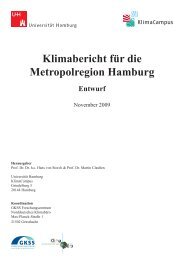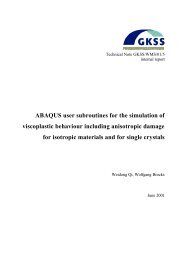Dynamics and Vulnerability of Delta Systems - loicz
Dynamics and Vulnerability of Delta Systems - loicz
Dynamics and Vulnerability of Delta Systems - loicz
Create successful ePaper yourself
Turn your PDF publications into a flip-book with our unique Google optimized e-Paper software.
CS4: Rapid Caspian sea level change <strong>and</strong> the Volga <strong>Delta</strong><br />
Irina Overeem<br />
The Volga delta is a prime example <strong>of</strong> a delta that has been subjected to rapid sea-level change.<br />
IPCC reports alarming rates <strong>of</strong> worldwide sea-level rise over the last four decades, 1,8 mm/yr over<br />
1961-2003. Model projections <strong>of</strong> sea-level rise for the next century may amount to 6mm/yr. However,<br />
the Caspian Sea changes much more rapidly than the global oceans (100 mm/yr). Over the last<br />
century the Caspian Sea went through an entire 3 m sea level cycle.<br />
70% <strong>of</strong> the fresh water influx to the Caspian Sea is derived from the Volga River. As a result Caspian<br />
sea-level changes show a statistically significant correlation with changes in the discharge <strong>of</strong> the<br />
Volga River. These in turn have been shown to record variations in precipitation over the Volga<br />
drainage basin, related to variations in the amount <strong>of</strong> Atlantic depressions that reach the Russian<br />
mainl<strong>and</strong>. Arpe et al. (2000) showed the correlation <strong>of</strong> Caspian Sea level change with ENSO. This<br />
implies that at times <strong>of</strong> sea-level fall, water <strong>and</strong> sediment flux towards the coast is low, whereas at<br />
times <strong>of</strong> sea-level rise fluxes towards the coast are relatively high.<br />
Consequently, the Volga delta experiences extremely rapid progradation <strong>of</strong> the coastline during sealevel<br />
fall, i.e. the system shoots out into its shallow basin. This was observed in the delta between<br />
1935 <strong>and</strong> 1951. However, during sea-level rise the delta only drowns relatively slowly because sediment<br />
input helps to keep up with the rising water levels, as can be seen from the period 1981-1989.<br />
The coastline is stable then <strong>and</strong> levees were found to aggrade despite 1,5m sea level rise (Overeem<br />
et al. 2003a, 2003b). The Volga serves as an example <strong>of</strong> a delta system in which water <strong>and</strong> sediment<br />
inputs are correlated with sea-level change, making the response to change highly asymmetric.<br />
Fig. CS4.1: Vegetation mapping in the Astrakhan Nature Reserve area <strong>of</strong> the Volga delta records the rapid<br />
shoreline changes during sea level fall <strong>and</strong> more moderate infill during sea level rise over the last century<br />
(Overeem et al. 2003a, 2003b).<br />
Sea-level change related to global warming increases delta instability. The Volga delta forms a<br />
dramatic example <strong>of</strong> a delta w<strong>and</strong>ering across its delta plain under influence <strong>of</strong> the rapid sea level<br />
changes <strong>of</strong> the Caspian Sea (Case Study 4). Other deltas will be influenced in the coming century;<br />
the IPCC projected sea level will likely rise by 18-71 cm by the year 2070 with a best estimate <strong>of</strong><br />
19





